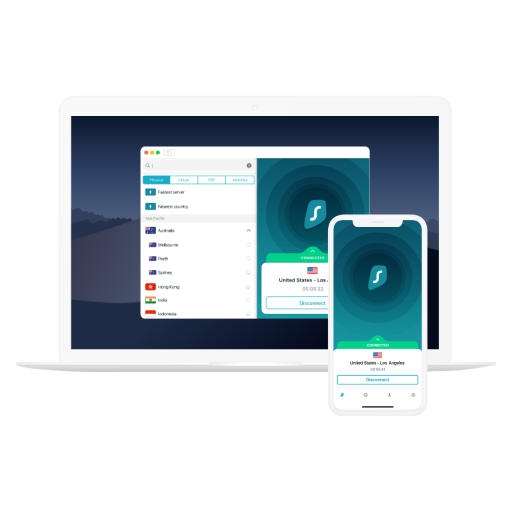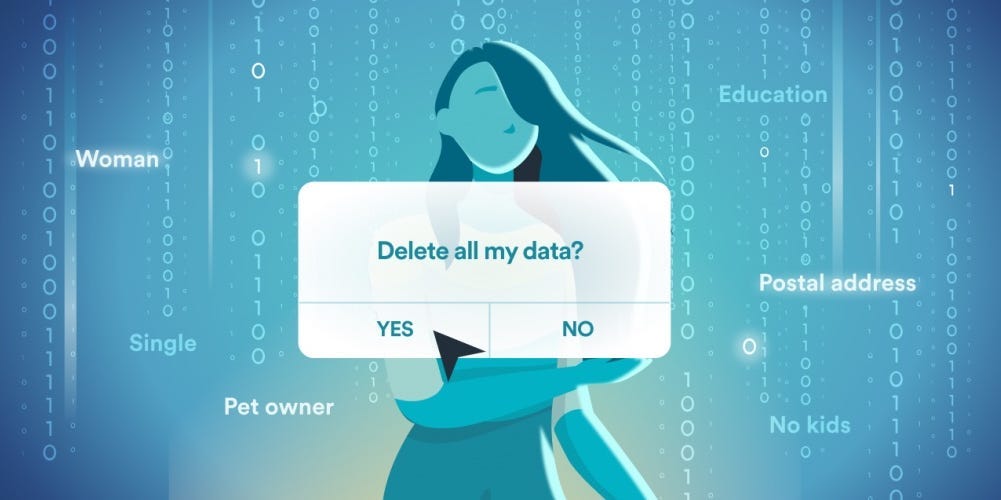When you buy through our links, Insider may earn an affiliate commission. Learn more
Whenever you browse the internet, accept cookies, or download an app, data brokers could be harvesting your personal information, such as your name, address, email, and phone number. Third parties can then use this data to send you spam emails, hit you with targeted ads, or pester you with telemarketing calls.
While you can send requests to data brokers to remove your private information yourself, this takes a lot of time and effort.
Luckily, thanks to Surfshark, you don’t have to. The VPN provider has launched Incogni, a data privacy tool that handles everything on your behalf. The subscription-based service will contact these companies for you and demand that they remove your information from their databases.
Incogni sends data deletion requests to over 180 data brokers, including public and private data brokers, paid sites, and people search sites, such as Public Record Search.
But how well does it work? How much does it cost? And does it really work as well as the claims suggest? We’ve put it through its paces for our hands-on Incogni review.
What are data brokers?
A data broker (sometimes also called an information product company) is an organization that makes money by harvesting your personal information and selling it to third parties. This is usually for marketing purposes, such as cold calls, spam emails, and targeted ads.
Data brokers can collect and sell a surprising amount of highly sensitive information about you, including your name, date of birth, contact information, home address, marital status, and profession. Perhaps more concerningly, they can also gather information about your purchase habits, political preferences, medical history, and even criminal record.
They collect this data through multiple sources, such as your search history, public records, and purchase history. You may also have inadvertently agreed to data brokers collecting and distributing your personal information when signing up for new online services. This is because there are often clauses hidden away in the terms and conditions that give companies the right to harvest and share your data with third parties.
Sign-up process
Signing up for Incogni is very straightforward. First, you’ll be prompted to sign up with your email address and create a password. Once that’s done, you’ll need to fill in the authorization form granting Incogni the right to send out requests on your behalf.
You’ll be asked to fill in a few more details before signing up, which may feel a little intrusive, especially if you’re concerned about companies harvesting your data. But Incogni assures us that this is only to ensure that it has enough identifying information to get brokers to delete your data successfully.
Finally, you’ll need to enter your payment details and decide whether to pay monthly or annually. Then you’re all set. You can only submit a single email address for them to search for, but we’ve been told the ability to add more is coming soon.
As soon as you’ve created your account, you’ll be taken to the Incogni dashboard. This shows you how many data brokers they have contacted, how many requests are in progress, and how many have been completed. You’ll also see an activity log, which displays how many databases you’ve been removed from in real time.
When I created my account, Incogni started working immediately. And within seconds, it had already successfully completed two requests for my details to be removed. However, because data brokers have a reasonable window to respond to requests, many of them take a while to be completed. Annoyingly, you won’t be notified when a request is completed, but it will show up in your activity log on the Incogni site. So, you just need to keep checking your Incogni account for updates.
Speaking of which, everything is accomplished on Incogni’s website. At the time of writing, there’s no mobile or desktop app for Incogni.
Results
When I created my account and logged in for the first time, Incogni identified 52 data brokers that held personal information about me and immediately contacted them all. Two responded instantly, while others took weeks to resolve.
In the detailed view, you can see a complete list of the data brokers contacted, their compliance scores, and their associated risks. These risks can range from targeted ads and spam emails to identity theft and even an impact on your credit rating.
While testing it out, I double-checked that some of the data brokers that had my details before I signed up for Incogni had actually deleted my information when Incogni said they had. From what I could see, Incogni was as good as its word and had ensured the brokers removed my details. This includes RocketReach, which had a webpage with my name on it and a button that would reveal my contact information to its users. Thankfully, that has now been removed.
Overall, I was pretty impressed with the results, although I’d have liked to have been updated on Incogni’s progress by a notification or a regular email report.
Support options
When it comes to support, Incogni could definitely improve its offering. You’ll find a Help link in the website footer, which will take you to a searchable knowledge center. But it’s not very thorough and, therefore, doesn’t often surface the most helpful response. There’s also an FAQ section, which only has around a dozen frequently asked questions.
On the plus side, there’s a button to submit a request in the top-right of the screen. This takes you to a form that allows you to write a detailed description of your issue. There’s also the option to upload a file, which is helpful if you want to attach a screenshot of the error you’re experiencing.
When we tested this out, we received a helpful and polite response within 24 hours, proving that Incogni’s customer support, such as it is, is fast and effective. However, it’s a shame that there’s no live chat option, phone number, or direct email address.
Pricing and plans
Currently, Incogni has one simple plan on its website, which you can pay for monthly or save 50% by paying annually. A one-year plan works out at the equivalent of $6.49 a month, or there’s a rolling one-month version at $12.99. You can also pay in Euros, Canadian dollars, or UK Sterling.
This is actually pretty good value, as most other privacy assurance subscriptions that offer similar services to Incogni cost significantly more than this. By comparison, DeleteMe costs $10.75 monthly, while Privacy Bee costs $197 yearly.
While a standalone subscription to Incogni is very reasonably priced, there’s an option that offers even better value. You can get Incogni as part of the Surfshark One+ plan, which starts at just $4.59 a month. Note: The Surfshark website isn’t very clear that you’re getting Incogni. Instead, the service on the One+ tier is labeled as a ‘Remove your data from databases’ feature.
For this price, you’ll get near enough everything you need for your cyber security. This includes Surfshark’s highly recommended VPN (see our full Surfshark VPN review for more) and its robust antivirus software, ad blocker, and additional security tools. So, if you’re looking for a complete security package, this is a secure and wallet-friendly solution.

Unfortunately, Incogni doesn’t come with a free trial. However, if you want to test it out for free, we’d recommend signing up for a free seven-day trial of Surfshark’s One+ plan, which includes an Incogni subscription. There’s also a 30-day money-back guarantee, so you can thoroughly try it before committing to a long-term payment plan.
It’s worth noting that Incogni is currently only available for customers living in the US, Canada, and the UK. This is because it can only contact brokers in these countries. So, while you can sign up from another part of the world, Incogni can only request that your data be removed from those regions’ databases.
Read the full article here





